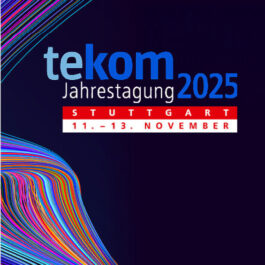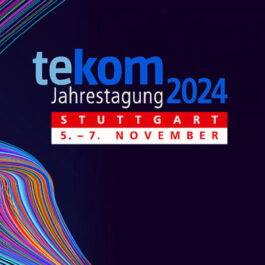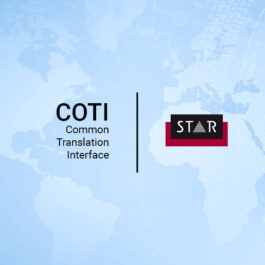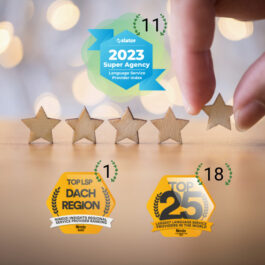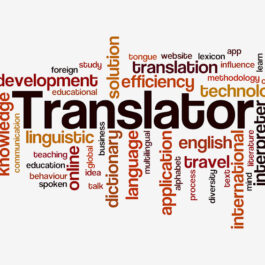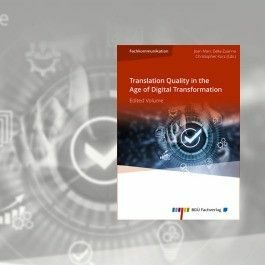E-learning is considered a central pillar of continuing professional development in many companies – from global onboarding courses to complex product training. At the same time, projects repeatedly face similar challenges: Content that works extremely well in the country of origin loses its impact in other markets, is misunderstood or simply not used. The reason for this rarely lies in the didactic concept itself, but rather in the type and quality of localisation.
Why companies rely on e-learning
From a business perspective, numerous factors speak in favour of digital learning formats. Employees can learn flexibly – regardless of location, time zone and device, which suits geographically dispersed teams.
E-learning supports independent learning at any time: Content is available on demand, without having to rely on specific training dates. Thanks to their modular setup, learning units can be clearly structured, specifically combined and, if necessary, updated gradually.
Another advantage is that the learning pace is down to each individual: Employees can pause, repeat or delve deeper into complex content without disrupting anyone else’s flow. In addition, digital training makes it possible to create customised learning content – tailored to specific roles, regions or target groups within the company.
Multimedia elements such as videos, animations, interactive exercises and quizzes create a rich learning experience and increase engagement. Offering content in multiple languages contributes significantly to accessibility and, for international workforces, makes real headway in terms of removing barriers to learning.
Ultimately, when these factors are successfully implemented, they lead to increased learning success – measurable in terms of knowledge transfer, application in daily work and reduced error rates.
Complexity of modern e-learning formats
In practice, it quickly becomes apparent that e-learning courses are significantly more complex than traditional training materials. A typical module includes slides or screen recordings, embedded videos, spoken commentary, subtitles and interactive elements such as quizzes, conversation simulations and the like.
When it comes to localisation, this means that content to be translated is not contained in a single file or format, but is distributed across a variety of authoring tools such as Adobe Captivate, Articulate Storyline, Articulate Rise, iSpring, Elucidat, Lectora etc., SCORM packages, video and audio scripts, and, where necessary, external sources (e.g. course descriptions, content in files linked to the course, where applicable) and, in some cases (video and audio scripts), still need to be transcribed before localisation. In addition, there are technical requirements – such as support for character sets, space restrictions in buttons, and synchronising subtitles and voiceovers.
Underestimating the complexity of this process often leads to problems during the project: Missing text exports, texts with similar content in different formats, untranslated UI elements or videos that have to be edited retrospectively at great expense. For a localisation process to run smoothly, therefore, a structured approach that takes all components into account from the outset is crucial.
Learning in your native language: an efficiency factor
From a didactic perspective, it is well documented that learning content is best internalised when delivered in one’s own mother tongue. Learners then need to expend less cognitive effort in understanding the language and can concentrate more on content, context and application.
This is particularly important when dealing with complex, security-related or legal issues in order to avoid misunderstandings and misinterpretations. Emotional access also plays a role: Language can influence how credible, esteemed and motivating a training course is perceived to be.
For companies, this means that even employees with good foreign language skills benefit from training in their native language – namely, by making faster and more stable progress in their learning. Those who systematically utilise these positive consequences are able to significantly increase the effectiveness of global learning programmes and, at the same time, justify the investment in localisation.

The role of professional specialist translations in e-learning localisation
In order for e-learning courses in other languages to achieve the same learning objectives as the original, a basic word-for-word translation simply cannot do the job.
Native-speaking specialist translators combine linguistic competence with industry knowledge and are familiar with the terminology and common phrases used in their respective fields of expertise.
They ensure that technical terms are used consistently, instructions are clear and action-oriented, and didactic subtleties are preserved.
At the same time, they adapt examples, metaphors or references if these are not readily translatable with regard to either culture or context.
Professional translation therefore makes a significant contribution to learning objectives being achieved quickly: Content is easier to understand, easier to remember and more likely to be put into practice.
A clearly defined terminology and review process also supports company-wide consistency, both in terms of corporate documentation and individual learning outcomes. This is especially the case when dealing with a vast number of courses and a multitude of languages.
The importance of professionally localised audio and video
Audio and video are key carriers of information and sources of motivation in modern e-learning courses – and pose particular challenges for localisation.
Voiceover texts must be translated in such a way that they match the visual material in terms of tone, length and rhythm, while at the same time being technically accurate.
For voiceovers, you also need to select suitable narrators or satisfactory AI software to suit your corporate image and target audience.
In addition to the voice, elements such as the narrator’s gender, age, pronunciation quality, accent and/or dialect, and any background sound such as music, etc., are crucial in order to avoid misunderstandings and convey an entirely professional feel.
The client’s specifications regarding desired pronunciation, use of abbreviations, accessible (i.e. gender-neutral) language, and so on, are essential, as the client’s satisfaction will be strongly tied to how well these requests are implemented.
Subtitles, on the other hand, must be precise, easy to read and synchronised with the spoken word. The wording must be concise as well as complete, with some rephrasing required.
Last but not least, visual elements – such as text overlays or UI screens – may need to be adapted to ensure that they remain understandable in the target language and fit in with the design in terms of form.
Licence for e-learning
Last but not least, when using human voices for voiceovers, the customer must also clarify the intended use and reach. Are the e-learning courses with voiceover to be used exclusively internally or also publicly? Are there any plans to sell the courses commercially to third parties?
Depending on the type of transmission and the type of media/rights usage, the recording studio involved in the project may charge a licence fee per voice artist used. In most cases, these are flat fees with indefinite validity.
Summary: Localisation as an integral part of the e-learning strategy
E-learning can only reach its full potential when content is tailored to the specific language and culture.
Companies wishing to roll out e-learning courses internationally would do well to consider localisation as an integral part of the conceptualisation process from the outset – rather than as a downstream translation step.
The combination of didactically excellent courses, native-language specialist translation and professionally localised audio and video elements forms the basis for true learning success in multiple languages.
This makes global training programmes consistent, efficient and effective – and fulfils the requirement to make knowledge accessible across the globe without ever compromising on quality.
Get in touch to find out how we can help in ensuring your learning content achieves exactly the international impact you want – we speak your language!



